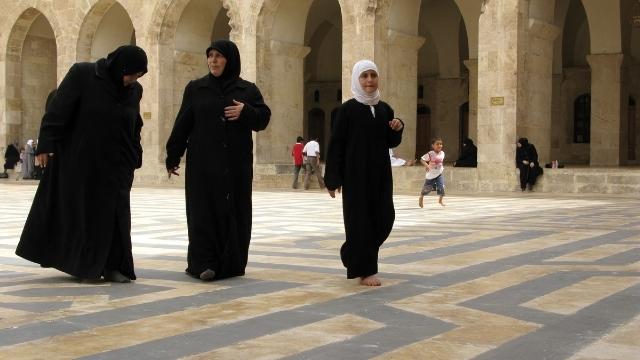12/02/2021MASSIMO INTROVIGNE A+ | A-
The phenomenon of the gender gap in religion, i.e. that more women than men are “spiritual,” is unfortunately known also to persecutors.
by Massimo Introvigne*
*A paper presented at the webinar “Women, Spirituality, and the Tai Ji Men Protests,” co-organized by CESNUR and Human Rights Without Frontiers on November 23, 2021, in preparation for the International Day for the Elimination of Violence against Women, November 25.

“Intercede pro devoto femineo sexu.” When I was a child, prayers in the Catholic Church were still said in Latin, and these words remained in my mind. They are directed to the Virgin Mary, the mother of Jesus, and mean “Intercede on behalf of the devout female sex.” They are part of a very old prayer composed by French Bishop Fulbert of Chartres, who died in the year 1028, and were used in different Catholic ceremonies, often in the beautiful musical version of Italian early Baroque composer Claudio Monteverdi.
I remember how as a child I was puzzled and even a little bit annoyed by these words. There was no parallel prayer for males. Why were the girls called the “devout sex”? Did this mean that us boys were not devout, or less Catholic than the girls?
When I grew up, and studied sociology of religion, I realized that Bishop Fulbert already understood our sociology with one thousand years of advance. Indeed, one of the main problems discussed by sociologists of religion is the so called “gender gap in religion,” i.e., the fact that in the vast majority of religious and spiritual groups through the world and throughout history there were and are more women than men.
Recently, that this is a universal phenomenon has been denied by quoting surveys showing that Muslim and Jewish Orthodox women go to mosques and synagogues less than men. This is, however, a misunderstanding. These women have a stronger religious faith and pray more than their men. They go less to places of worship because their religion mandates that a good conservative woman should spend most of the time at home and go out rarely, including to the mosque or synagogue.

But if this is a universal phenomenon, why does it happen? An ambitious book claiming to solve the problem was published in 2012 by two sociologists from the University of Aberdeen, in Scotland, Steve Bruce and Marta Trzebiatowska, under the title Why Are Women More Religious Than Men? Bruce is one of the last proponents of the now minoritarian thesis that modernity and science will lead to the demise of religion and spirituality. The book argued that because women spend more time at home and less in the workplace and public activities, there is a “time lag” in how they are affected by secularization and abandon religion. But eventually they will leave religion too.
Bruce’s theory in general and this book in particular have been widely criticized. Very few sociologists agree that religion and spirituality in themselves are disappearing. Although in the West church attendance is declining, this is not the only parameter to measure religion. Belief may remain strong even when attendance to religious ceremonies decline, and new forms of spirituality may emerge and replace the old ones.
Besides, although there were no sociologists producing statistics at that time, the voice of witnesses such as Bishop Fulbert come to us from many centuries ago, and suggests that there were more devout women than men well before modernization.
We can thus regard as more believable theories advanced by other sociologists, including Rodney Stark, that there are biological reasons explaining why women are more spiritual than men. Stark believes that lower levels of testosterone explain why women are less willing to take risks, including the risk of having a worst afterlife by being punished for their refusal of religion. Other scholars argued that the direct experience of giving birth and being mothers is in itself conductive to spirituality.
These appear to be secular versions of the theory found in many Eastern schools and Western esoteric movements, that women have a direct relation with the sacred and men a mediated one through women.
While the debate continues, a dark side of the gender gap in religion is that those who want to destroy a religion usually attack its women. This has been noted in all persecutions, where women were terrorized, detained, tortured, and raped. As Dr. Daniela Bovolenta said in her introduction to this webinar, this is not only explained by statistics—if there are more women in spiritual movements, there will also be more women among the persecuted—but has also a symbolic scope. Attacking the women strikes at the heart of a religious and spiritual movement.
We saw this at work in the Tai Ji Men case. When its shifu, Dr. Hong, was arrested in 1996, its shimu, i.e., Dr. Hong’s wife, was also taken to detention center. She shared both his suffering and the victory when the Supreme Court in 2007 concluded that they were not guilty of any crime.

During the times of slander and protest, female dizi continued to suffer. A paradigmatic case was the one of Ms. Huang, a woman peacefully protesting who was detained and mistreated on September 19, 2020.
Today’s celebration is an opportunity to say thank you to the women of Tai Ji Men. Thank you, brave women. We learn a lot from you and we hope we will be able to help you.
Source: Bitter Winter
